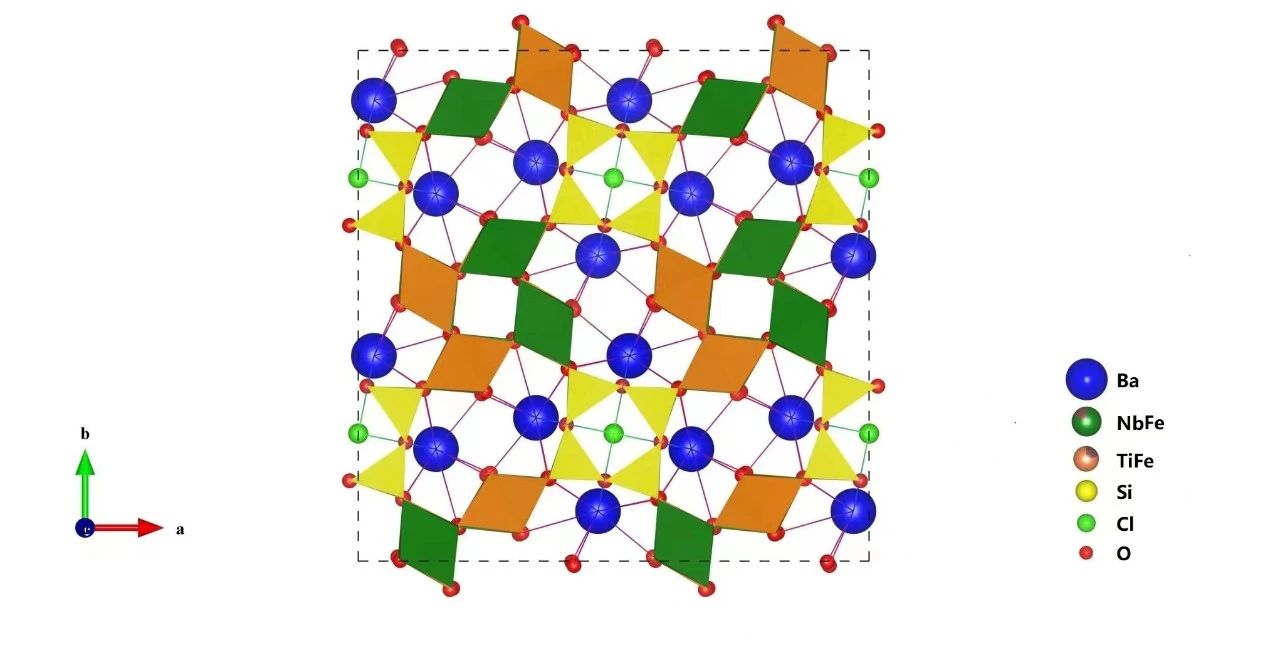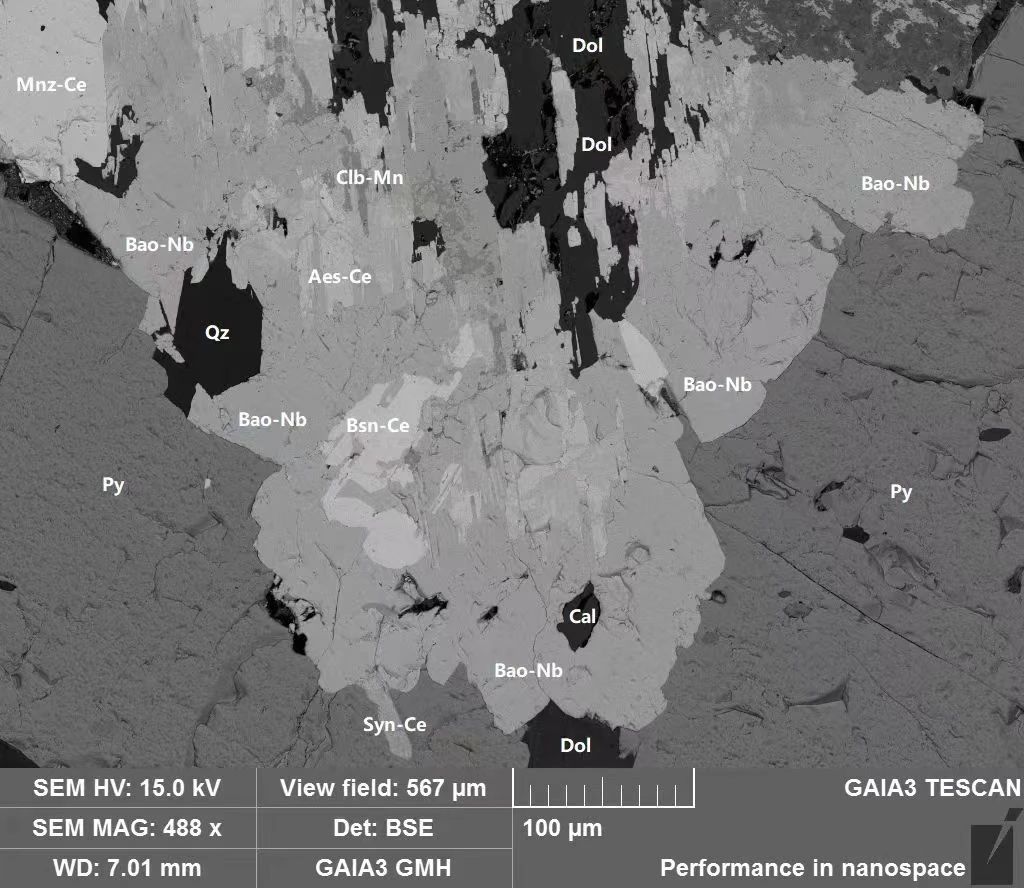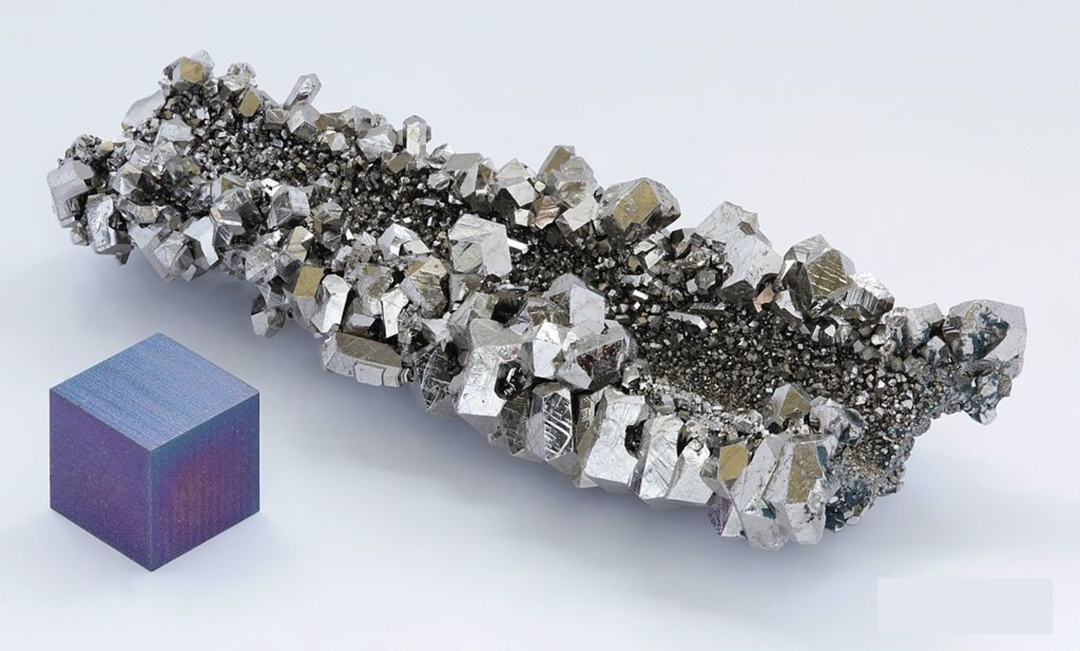The new mineral niobobaotite, discovered by researchers Ge Xiangkun, Fan Guang, and Li Ting from China Nuclear Geological Technology Co., Ltd. (Beijing Institute of Geology, Nuclear Industry), was officially approved by the New Minerals, Nomenclature, and Classification Committee of the International Mineral Association (IMA CNMNC) on October 3, with approval number IMA 2022-127a. This is the 13th new mineral discovered in the nearly 70 years since the establishment of China’s nuclear geological system. It is another original new discovery by China National Nuclear Corporation, which has deeply implemented the innovation driven development strategy and vigorously supported basic innovation.
The “Niobium Baotou Mine” was discovered in the world-renowned Baiyunebo deposit in Baotou City, Inner Mongolia. It occurs in niobium rare earth iron ore and is brown to black, columnar or tabular, semi idiomorphic to heteromorphic. “Niobium Baotou Mine” is a silicate mineral rich in Ba, Nb, Ti, Fe, and Cl, with an ideal formula of Ba4 (Ti2.5Fe2+1.5) Nb4Si4O28Cl, belonging to the tetragonal system and spatial group I41a (# 88).
Backscatter electron images of niobium baotou ore
In the figure, Bao Nb niobium Baotou ore, Py pyrite, Mnz Ce cerium monazite, Dol dolomite, Qz quartz, Clb Mn manganese niobium iron ore, Aes Ce cerium pyroxene, Bsn Ce fluorocarbon cerite, Syn Ce fluorocarbon calcium cerite.
The Baiyunebo deposit has a rich variety of minerals, with over 150 types of minerals discovered so far, including 16 new minerals. The “Niobium Baotou ore” is the 17th new mineral discovered in the deposit and is a Nb rich analogue discovered in the Baotou ore deposit in the 1960s. Through this study, the long-standing issue of electricity price balance in Baotou Mine, which has been debated by the international mineralogy community, has been resolved, and a theoretical foundation has been laid for the study of “niobium Baotou Mine”. The “Niobium Baotou Mine” with rich Nb characteristics has increased the variety of niobium ore minerals in this deposit, and also provided a new research perspective for the enrichment and mineralization mechanism of niobium, providing a new direction for the development of strategic key metals such as niobium.
Crystal Structure Diagram of Niobium Baotou Ore [001]
What exactly is niobium and niobium ore?
Niobium is a rare metal with silver gray, soft texture, and strong ductility. It plays a crucial role in the development of the national economy as a raw material for the production or derivation of single and multiple alloys.
Adding a certain amount of niobium to metal materials can significantly improve their corrosion resistance, ductility, conductivity, and heat resistance. These characteristics make niobium one of the core materials for the development of superconducting technology, information technology, new energy technology, and space technology.
China is one of the countries with abundant niobium resources in the world, mainly distributed in Inner Mongolia and Hubei, with Inner Mongolia accounting for 72.1% and Hubei accounting for 24%. The main mining areas are Baiyun Ebo, Balzhe in Inner Mongolia, and Zhushan Miaoya in Hubei.
Due to the high dispersion of niobium minerals and the complex composition of niobium minerals, except for the small amount of niobium recovered as an accompanying resource in the Baiyunebo mining area, all other resources have not been well developed and utilized. Therefore, about 90% of the niobium resources required by industry rely on imports, and overall, they still belong to a country where resource supply exceeds demand.
Tantalum niobium deposits in China are often associated with other mineral deposits such as iron ore, and are basically polymetallic symbiotic deposits. Symbiotic and associated deposits account for over 70% of China’s niobium resource deposits.
Overall, the discovery of the “Niobium Baotou Mine” by Chinese scientists is an important scientific research achievement that has a positive impact on China’s economic development and strategic resource security. This discovery will reduce dependence on foreign supply and enhance China’s autonomous and controllable capabilities in strategic key metal fields. However, we also need to recognize that resource security is a long-term task, and we need more scientific research innovation and resource strategic planning to ensure the sustainable development of China’s economy and technology.
Post time: Oct-11-2023

